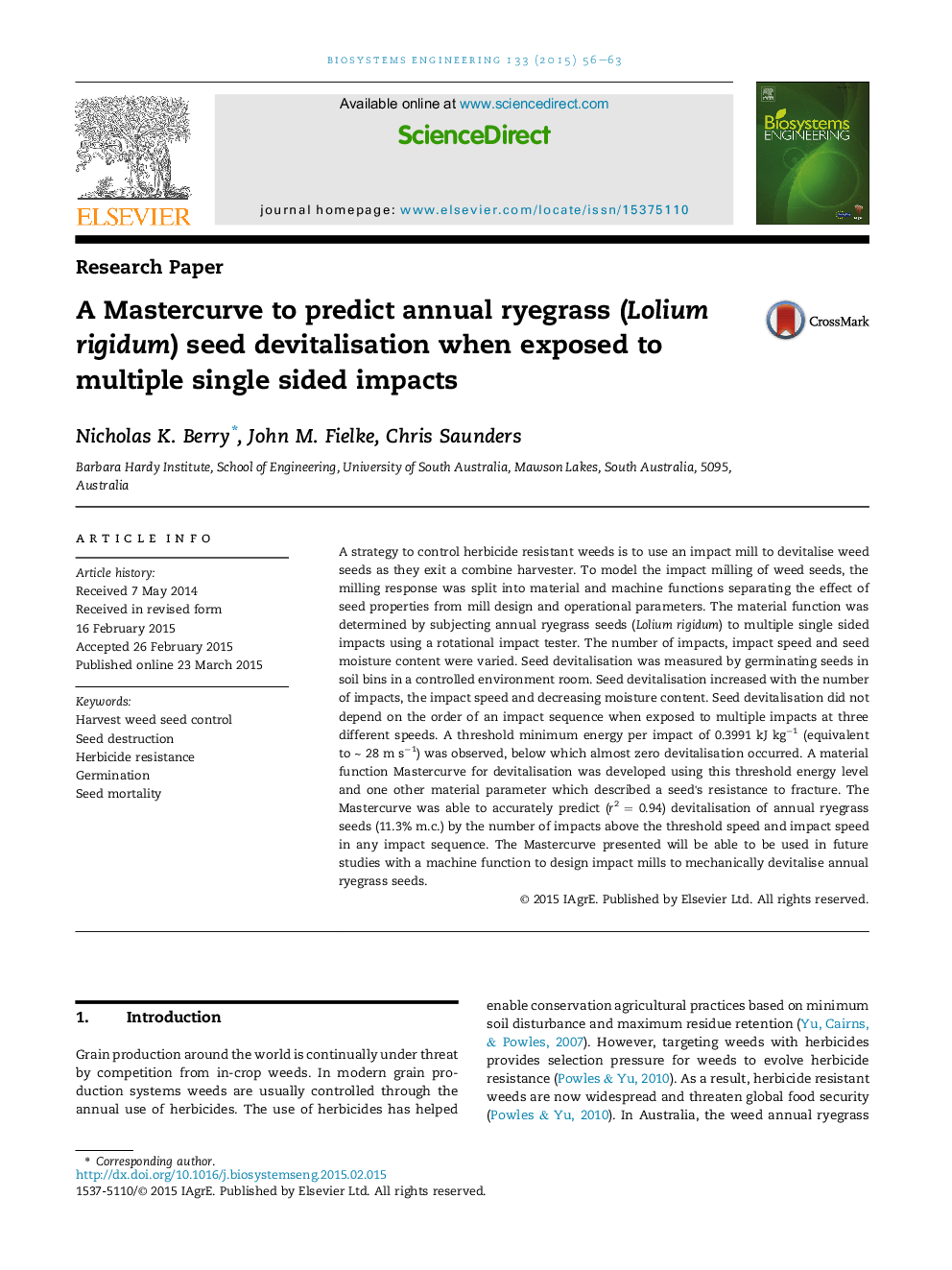| Article ID | Journal | Published Year | Pages | File Type |
|---|---|---|---|---|
| 1711034 | Biosystems Engineering | 2015 | 8 Pages |
•Seed devitalisation increased with impact speed and number of impacts.•Seed devitalisation reduced with moisture content.•Mastercurve fit based on impact energy above minimum impact energy.•Minimum impact energy for seed devitalisation was 0.3991 kJ kg−1 or 28 m s−1.
A strategy to control herbicide resistant weeds is to use an impact mill to devitalise weed seeds as they exit a combine harvester. To model the impact milling of weed seeds, the milling response was split into material and machine functions separating the effect of seed properties from mill design and operational parameters. The material function was determined by subjecting annual ryegrass seeds (Lolium rigidum) to multiple single sided impacts using a rotational impact tester. The number of impacts, impact speed and seed moisture content were varied. Seed devitalisation was measured by germinating seeds in soil bins in a controlled environment room. Seed devitalisation increased with the number of impacts, the impact speed and decreasing moisture content. Seed devitalisation did not depend on the order of an impact sequence when exposed to multiple impacts at three different speeds. A threshold minimum energy per impact of 0.3991 kJ kg−1 (equivalent to ∼ 28 m s−1) was observed, below which almost zero devitalisation occurred. A material function Mastercurve for devitalisation was developed using this threshold energy level and one other material parameter which described a seed's resistance to fracture. The Mastercurve was able to accurately predict (r2 = 0.94) devitalisation of annual ryegrass seeds (11.3% m.c.) by the number of impacts above the threshold speed and impact speed in any impact sequence. The Mastercurve presented will be able to be used in future studies with a machine function to design impact mills to mechanically devitalise annual ryegrass seeds.
